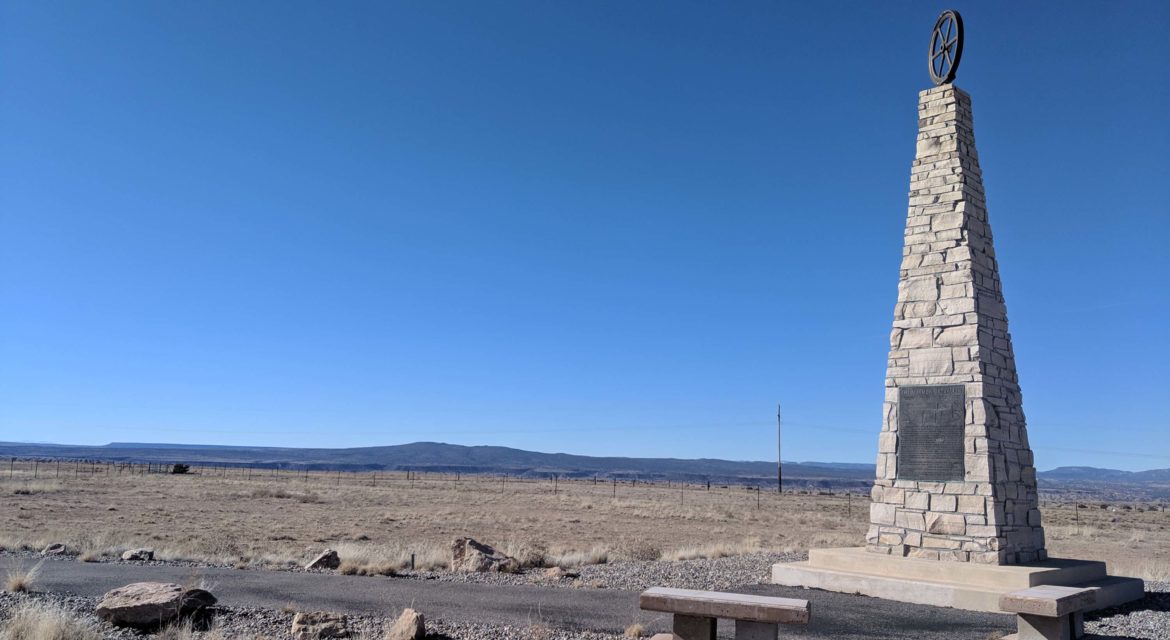 Numerous monuments have been dedicated to the Mormon Battalion, the only religion-based unit in United States military history. Composed of more than 500 men in the service of the United States, the Mormon Battalion marched across the country to provide vital support during the Mexican-American War and also opened up a southern wagon route to California. These developments spurred the creation of the Mormon Battalion Monument in New Mexico, which celebrates the perseverance and strength of the Battalion, although exactly how it does so continues to change.
Numerous monuments have been dedicated to the Mormon Battalion, the only religion-based unit in United States military history. Composed of more than 500 men in the service of the United States, the Mormon Battalion marched across the country to provide vital support during the Mexican-American War and also opened up a southern wagon route to California. These developments spurred the creation of the Mormon Battalion Monument in New Mexico, which celebrates the perseverance and strength of the Battalion, although exactly how it does so continues to change.

A 2,000 Mile March
 The volunteer unit came together in 1846, as members of The Church of Jesus Christ of Latter-day Saints sought aid from the United States government as they prepared to moved west. President James K. Polk authorized the induction of Mormons who were on their way to California into the Army. Shortly after, the President sent a request for a battalion of 500 volunteers to fight in the Mexican War. The Mormon Battalion was mustered into volunteer service on July 16, 1846 as part of the Army of the West under General Stephen Kearny.
The volunteer unit came together in 1846, as members of The Church of Jesus Christ of Latter-day Saints sought aid from the United States government as they prepared to moved west. President James K. Polk authorized the induction of Mormons who were on their way to California into the Army. Shortly after, the President sent a request for a battalion of 500 volunteers to fight in the Mexican War. The Mormon Battalion was mustered into volunteer service on July 16, 1846 as part of the Army of the West under General Stephen Kearny.
The plaque on the monument displays a map of the route the Battalion took as it went from Council Point in Iowa all the way to San Diego, California. Lieutenant Colonel Philip St. George Cooke took command of the battalion in Santa Fe, where his orders were to march them to California and to build a wagon road along the way. A long quote from Lt. Col. Cook is displayed on the marker, which highlights the difficulties the Battalion went through on the 2,000-mile march.
“Thus, marching half naked and half fed, and living upon wild animals, we have discovered and made a road of great value to our country.”
The Mormon Battalion arrived in San Diego on January 29, 1847. For the next five months until their discharge on July 16, 1847 in Los Angeles, the battalion trained and also performed occupation duties in several locations in southern California. Many historic sites are now associated with the Mormon Battalion, including the marker that now sits between Santa Fe and Albuquerque in New Mexico.

Between Albuquerque and Santa Fe
 The twenty-foot monument with a wagon wheel at the top once stood southwest of Albuquerque, New Mexico. It marked an important point on the historic route traveled by the Mormon Battalion as it left Santa Fe in 1846. Erected in 1940 by Committee for the Erection of the Mormon Battalion Monument in New Mexico and the Utah Pioneer Trails and Landmarks Association, the monument was taken down and stored when U.S. highway 85 became I-25. It was eventually reassembled at the present site, which is located just off I-25 between the cities of Albuquerque and Santa Fe.
The twenty-foot monument with a wagon wheel at the top once stood southwest of Albuquerque, New Mexico. It marked an important point on the historic route traveled by the Mormon Battalion as it left Santa Fe in 1846. Erected in 1940 by Committee for the Erection of the Mormon Battalion Monument in New Mexico and the Utah Pioneer Trails and Landmarks Association, the monument was taken down and stored when U.S. highway 85 became I-25. It was eventually reassembled at the present site, which is located just off I-25 between the cities of Albuquerque and Santa Fe.
Numerous signs call out the presence of the monument, which can be reached by taking I-25 between Albuquerque and Santa Fe, New Mexico. A small parking lot makes access especially simple, and a couple benches enable visitors to sit and enjoy the surrounding countryside.
The view of and around the Mormon Battalion Monument has changed over the years, and the interpretations of it have similarly evolved. The starkest example of that change is the unauthorized removal of the word “savages” in Lt. Col Cook’s quote, and that along with the Batallion’s involvement in the Temecula Massacre will cause many to reevaluate what the monument can and should represent and commemorate.
Efforts to do so are ultimately about honoring the legacy that the monument was erected to celebrate, and doing so ensures it makes as much sense in the present as it does the future.

 A Legacy of Perseverance and Strength
A Legacy of Perseverance and Strength
Like other monuments that have dedicated to people or events, the Mormon Battalion Monument celebrates a legacy of perseverance and strength. How that legacy is interpreted continues to change and evolve which will add another important element to the monument that future generations can appreciate.

